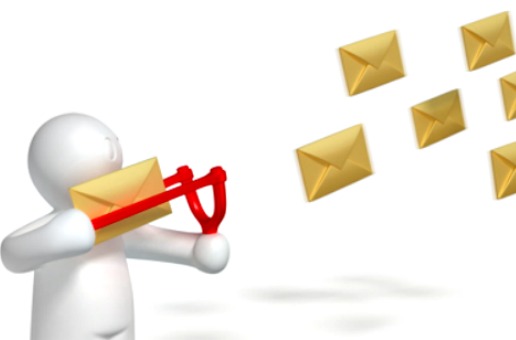 Are you about to click “send” on a long missive about why the recipient of your email should meet with you about your startup? Stop. Do not pass go, do not collect a seed round investment for $200,000. You’re going to need to warm up your cold email if you expect the recipient to read beyond the first few words before trashing it. As Mark Suster, General Partner at the venture capital firm GRP Partners writes, “Most VC’s will figure that if you are truly an entrepreneur you’ll find somebody that knows them, develop a relationship with that person and find a way to get them to introduce you to the VC.” Similarly, marketing thought leader Seth Godin says that entrepreneurs need to “spend the time earning the right to make the proposal. Spend the time building a presence that gets you an invitation, or, at the very least, earns you the credibility to walk in the front door.” Almost all people in business, no matter where they fall on the totem pole, agree. Everyone is swimming in email, even your grandma, and most if it extracts value and time from their lives rather than adding to it. If you send an email demanding to meet with someone who has never heard of you to pitch your startup idea, your efforts will be wasted. Still, there are times when your hacker is hard at work building your product and you are assigned with the hustling work. You’ll have to contact key people who might beta test, invest, or connect you with larger enterprise customers. If you have to send cold emails out to prospects, here are a few tips that I have learned from experience to help you warm them up.
Are you about to click “send” on a long missive about why the recipient of your email should meet with you about your startup? Stop. Do not pass go, do not collect a seed round investment for $200,000. You’re going to need to warm up your cold email if you expect the recipient to read beyond the first few words before trashing it. As Mark Suster, General Partner at the venture capital firm GRP Partners writes, “Most VC’s will figure that if you are truly an entrepreneur you’ll find somebody that knows them, develop a relationship with that person and find a way to get them to introduce you to the VC.” Similarly, marketing thought leader Seth Godin says that entrepreneurs need to “spend the time earning the right to make the proposal. Spend the time building a presence that gets you an invitation, or, at the very least, earns you the credibility to walk in the front door.” Almost all people in business, no matter where they fall on the totem pole, agree. Everyone is swimming in email, even your grandma, and most if it extracts value and time from their lives rather than adding to it. If you send an email demanding to meet with someone who has never heard of you to pitch your startup idea, your efforts will be wasted. Still, there are times when your hacker is hard at work building your product and you are assigned with the hustling work. You’ll have to contact key people who might beta test, invest, or connect you with larger enterprise customers. If you have to send cold emails out to prospects, here are a few tips that I have learned from experience to help you warm them up.
1) Become a writer.
The best way to get contacts in the startup ecosystem is to write about the people, places, and topics that interest you. You don’t have to commit to writing for a larger technology publication (although we would love for you to become a guest contributor!). Start your own blog, or start a video podcast where you interview guests on a regular basis. You’ll build a name for yourself in the industry, and you will gain access to the most brilliant minds working in technology and business today. Start by emailing a person and asking if you can feature them on your blog. Chances are, they are looking for a platform upon which to share information about their own work, and now they will remember you the next time you contact them.
2) Provide references in your email to keep them reading.
If someone won’t provide a warm introduction for you, you’ll have to provide a picture of your shared connections yourself at the start of the email to get the recipient to keep reading. Write something like, “I first discovered your connection to the organizer of the Wednesday web design meetup I go to because we were both talking about how much we admired your work with . If you have written about an organization that the recipient is a part of, provide the link and write something like, “I wrote about the last week and I noticed that you were on the board of directors. I’d love to talk with you a little more about your work with the organization and how I think I can help move your vision forward. Check it out! “. When someone realizes that they should know you, then they’ll want to know you.
3) Keep it short.
Don’t send a rambling story about the grand vision of your company, and then bury the ask under five paragraphs that read more like a charity fundraising letter than a business proposal. Keep it short, explain what you do in a sentence or two, ask your question, then explain in one sentence what the benefit is to the recipient. Something like this works: “Hello Jim, I am the co-founder of Acme Startup. We are a subscription-base service for squirrels who want acorns delivered straight to their treehouses so they don’t have leave them to search for food in the winter. Our lawyer Suzanne Linderhozen said that you are interested in eco-friendly startups, and we would like to meet with you at your convenience to show you our new patented acorn delivery system. I know that you have also invested in Trees Inc. and we think our product would be able to Trees Inc. money by cutting out middlemen in the traditional acorn distribution system. Thanks, John Q. Maplelover In this example, I stated what John does, what his company does, why Jim should know John, and why it would be valuable for Jim to meet with John. It’s that simple. If Jim wants more details, he’ll ask in a reply email. There is no need to spill everything on the first cold email.
4) If you get no response, follow up one time, and one time only.
If you get no response to your first cold email, follow-up only one more time. Remind the recipient that you sent an email a few months or weeks ago, but they must have been busy with XYZ. Then, repeat the major points of your first email. If you hear nothing back from your second email, DON’T harass the recipient on social networks like LinkedIn and Twitter asking it they got your email. They most likely trashed it anyway.
5) Prove that you are a person.
Warm up your cold email by dropping the generic robot geek speak. You are a human contacting a human, even if you are using a digital tool. Don’t use a form email, and make the email relevant and personal. Drop a few small details about yourself and the recipient will be more likely to realize that you actually want to talk to THEM and that they are not just one of many people that you are emailing about your business. As the hustler half of the classic hustler / hacker startup team for my startup Huedio, I’ve employed all of these tactics to line up an incredible number of high caliber meetings over the past month. The key is to form genuine relationships and add value in your startup community more than you ask for it. Play nice, connect people more than you get connected, and warm up your cold emails if you want to score that next big meeting. Image credit: Salesloft









